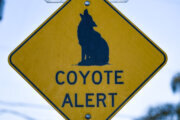You’re likely already aware of inflation pushing prices up on everyday items. But if you feel like your dollars simply aren’t going as far as they used to, you may be dealing with shrinkflation as well.
What Is Shrinkflation?
Shrinkflation is a practice in which manufacturers reduce the amount of a product they’re selling without lowering the price. It’s been happening for decades, but experts say that they’ve seen more of it lately, as inflation hit a 40-year high in June and producers look for ways to pass along price increases to consumers.
“If you’re looking at the package in the store, you might not even notice anything different, especially if they use the same branding” says Julie Ramhold, senior staff writer at DealNews.com, a deal-comparison website.
This strategy is common among companies because, in general, consumers are more likely to notice when product prices go up than when their size decreases slightly. The result, of course, is that consumers end up needing to buy more product to meet their needs.
[Inflation Calculator: See How Much Inflation Is Costing You]
Examples of Shrinkflation
In a June analysis of retail products, consumer advocate and lawyer Edgar Dworsky found the following examples of shrinkflation at the grocery store:
— Sparkle paper towels removed one sheet from each roll in its pick-a-size paper towel six pack, for a total of 116 sheets rather than 110.
— Cocoa Pebbles’ family size box shrunk in size from 20.5 ounces to 19.5 ounces, about a bowl’s worth of cereal.
— Some Pedigree dry dog food bags went from 50 pounds to 44 pounds.
— A jar of Utz pretzels “hards” went from 28 ounces to 26 ounces.
— Dawn Ultra dishwashing liquid shrunk from 7 ounces to 6.5 ounces.
While shrinkflation can impact any type of product, Dworsky says there are some “repeat offenders,” including paper products, snack foods, candy, cookies and breakfast cereal.
“It seems like they are always tinkering with the sizes of those things,” he says.
A recent study by 8451° found that more than half of consumers had noticed shrinkflation occurring in chip packages, 37% said they’d been seeing it in cereal and 29% said it was occurring in candy bars.
Ramhold says inflation has also been happening outside of the grocery store. Restaurants are selling smaller portion sizes, for example, and service providers may be unbundling service from certain deals as a way to compensate for higher labor costs.
[READ: How Americans Are Absorbing Price Surges Tied to Inflation.]
How to Beat Shrinkflation
While it can be hard to spot the signs of shrinkflation, experts recommend taking the following steps to lessen its bite:
— Look at the unit price of items you’re purchasing. Sometimes a manufacturer will engage in shrinkflation for one version of a product, but you can get a better price by buying the family-size version or a smaller box.
— Consider store brand items. These are typically the last products to experience the effects of shrinkflation.
— Complain to the manufacturer. While letting a manufacturer know that you’ve noticed shrinkflation may not result in them lowering the price, it could make them think twice about further size reductions on other products.
[How to Prepare for Food Inflation as Prices Rise]
Shrinkflation vs. Inflation
Shrinkflation often happens during periods of heightened inflation as a cost-saving measure, but inflation is not the same as shrinkflation.
Inflation refers to the rising cost of goods and services — for example when an 8 ounce product increases from $5 to $5.50 without the quantity or size of the good changing. Shrinkflation, on the other hand, means that a manufacturer is charging the same amount for a smaller sized item. Inflation may cause manufacturers to turn to shrinkflation as a means of masking the impact of inflation on their products.
More from U.S. News
What the Inflation Reduction Act Means for You
Inflation and Retirees: When to Think About Going Back to Work
How to Prepare for a Recession
What Is Shrinkflation? originally appeared on usnews.com







